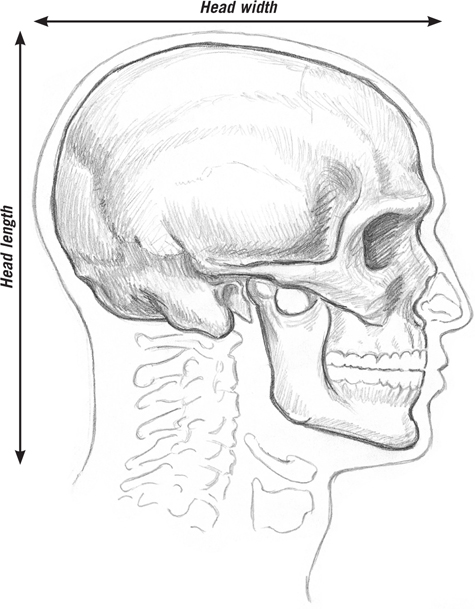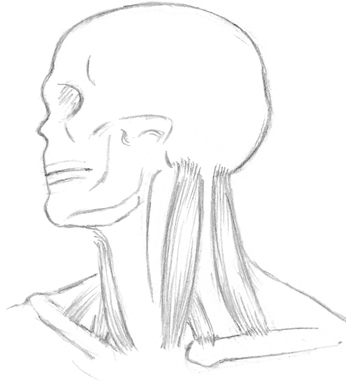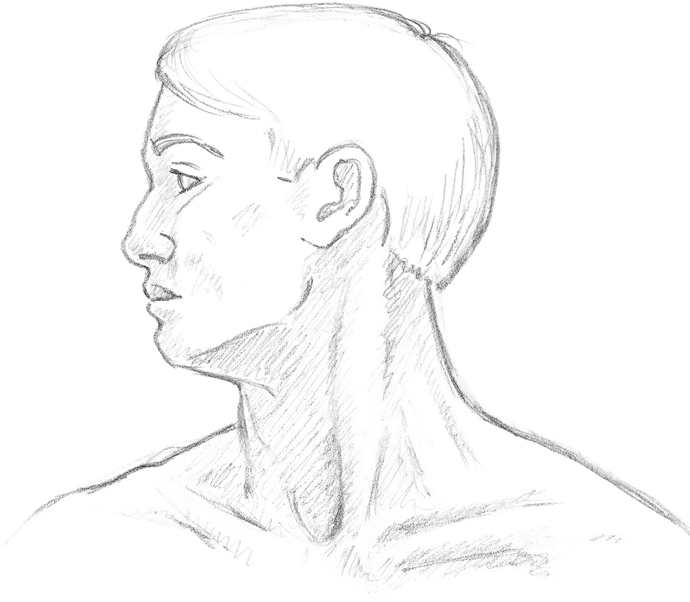
UNDERSTANDING BONE STRUCTURE Becoming familiar with the bones of the skull and the way they affect the surface of the skin is essential for correctly placing the curvatures, ridges, and other prominent features of the head.
When drawing faces, it is important to be aware of the underlying structures of the head. Although the bones and muscles aren’t visible in a final portrait, they provide the framework for the drawing, establishing the shape of the head and guiding the placement of the features. Having an understanding of the basic anatomy of the head will lend realism and credibility to your drawings.

UNDERSTANDING BONE STRUCTURE Becoming familiar with the bones of the skull and the way they affect the surface of the skin is essential for correctly placing the curvatures, ridges, and other prominent features of the head.

SEEING THE SKULL IN PROFILE In a profile view, it is easy to see how much area the back of the skull takes up. Notice that the length of the skull is just shy of its width.

UNDERSTANDING MUSCLE STRUCTURE When facial muscles contract, they affect the shape of the skin, cartilage, and underlying fatty tissues that cause the bulges, furrows, and other forms that create various facial expressions.


VISUALIZING THE UNDERLYING MUSCLES The large muscles of the neck and the clavicle bone twist when the head is turned. The muscles and clavicle are visible, even underneath the skin; they can create a bulge or tension that is evident on the surface.